Handicapping Blog | 18 July 2017
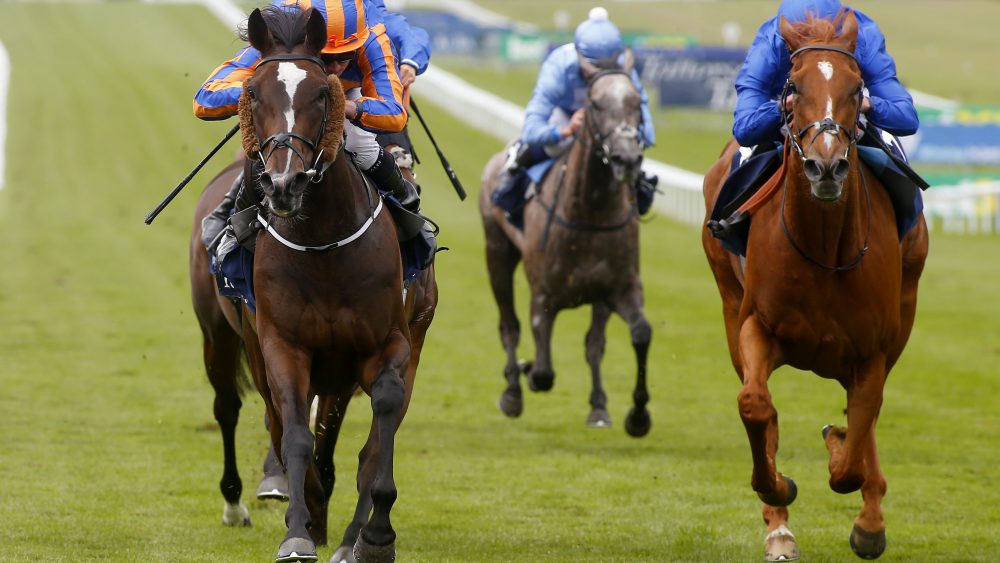
Brilliant speed, brilliant ride
This year’s 6f Group 1 Darley July Cup attracted the smallest field since Agnes World’s victory in 2000 writes Stewart Copeland. What it lacked in quantity it certainly made up for in quality.
Three of the field had already been successful at Group 1 level. They were Limato, triumphant in last year’s July Cup, and the winners of the two Group 1 sprints over 6f at Royal Ascot – the unbeaten 3yo Caravaggio and The Tin Man.
In my blog after Ascot I highlighted that the overall strength of the 3yo 6f form looked marginally stronger than the older horse division so far this year and Saturday’s race franked that current view. However it was not Caravaggio who consolidated that dominance but his closest rival at Ascot, Harry Angel.
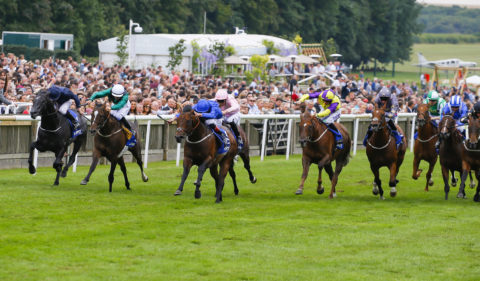
The race itself was a fascinating affair. Pace and tactics play a crucial role in any race and this year’s July Cup was a clear example. Watching the race live at Newmarket, it was clearly evident that the early gallop was relatively modest for a top class sprint and a position up with the pace was likely to be helpful.
That visual impression was backed up by the clock as the sectionals I took clearly showed the second half of the race was notably quicker than the first. This meant that those held up off the pace were at a disadvantage. To emphasise the point further the overall time for the race was pretty modest for a top class sprint.
However none of that should detract from an impressive success for Harry Angel. Ridden with a shade more restraint than at Ascot with his jockey content to track the pace-making Intelligence Cross. Harry Angel quickened in tremendous style 2f out and soon took control of the race. He never looked in any real danger thereafter. He has brilliant speed in abundance and his jockey utilised that to maximum effect with a great tactical ride.
As for assessing the race, the relatively modest gallop to halfway meant the overall field finished rather in a heap; so, at present, there is a degree of caution in settling on a level. Over the years I would expect a winning performance in the region of at least 118 or 119. For now I have credited Harry Angel with the latter figure. He was 118 after the Commonwealth Cup where there was reasons from the sectionals to think he was slightly better than the bare form that day. Therefore I am happy to credit him with the slightly higher figure.
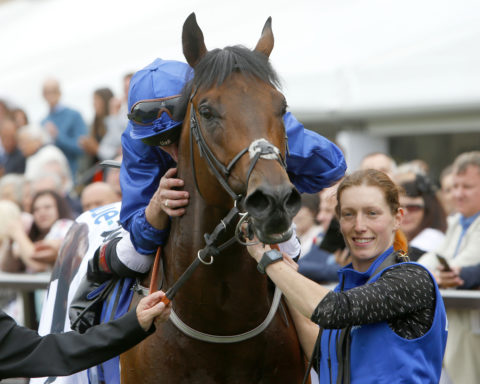
That ties in well with the prominently ridden Limato. He finished an admirable length and a quarter second in trying to defend his crown reproducing the 115 he ran in defeat in the Diamond Jubilee. A most creditable effort from him but still below his peak of 122 last year.
Brando ran an excellent race a further half-length back in third staying on strongly from the rear. This was a performance which could be marked up given how the race panned out. I have him running to 114 but there is no doubt in my mind he is still at least as good as the 116 he was already rated.
Finally Caravaggio may have lost his unbeaten record in finishing a narrow fourth but he still emerges from the race with plenty of credit. Quite simply he did not get the decent pace to aim at that he had at Ascot. The tempo of the race did not play to his strengths. As I said in my Ascot blog, we do not publish BHA ratings for Irish horses but my view at present is that his Commonwealth Cup win should remain unchanged at 121.
Guineas favourite has it to prove
Newmarket’s July Festival saw the latest round of major juvenile clashes. While we are still waiting for a potential superstar to announce their arrival with a big performance, there were one or two pointers if you read between the lines writes Graeme Smith.
Clemmie has looked a different filly in recording two pattern successes since finishing only seventh in the Albany. She posted her second 107-performance in succession when drawing away from the Chesham runner-up Nyaleti in the Bet365 Duchess of Cambridge Stakes.
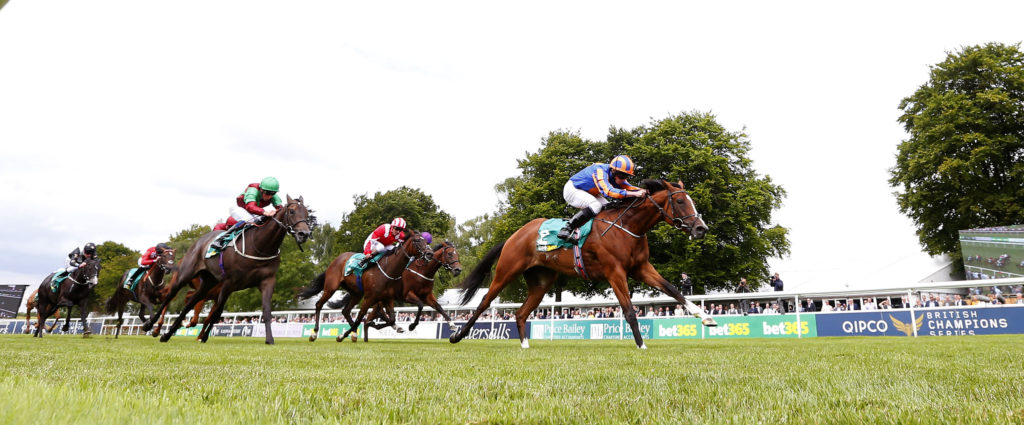
What looked a potentially interesting clash turned into a fairly comfortable success for Clemmie and it is easy to envisage her putting up a 110+ performance in the months ahead. She clocked a useful time and both that and the historical standards pointed in the direction of 107.
The third, fourth and fifth each showed improvement. Mistress of Venice had been drawn on the wrong side in the Albany. The Queen Mary third Out Of The Flames was stepping up in trip. The level has a solid foundation further back with So Hi Society and Darkanna having matched the figures they had achieved in the Empress (over the same course and distance) and Queen Mary respectively.
I now have several fillies around the 107/108 mark and the early signs suggest I could be raising Different League and Alpha Centauri from the Albany before long. From the first ten home only three have run subsequently but Clemmie and Actress have registered three pattern successes between them and Mistress of Venice also did her bit to boost the form.
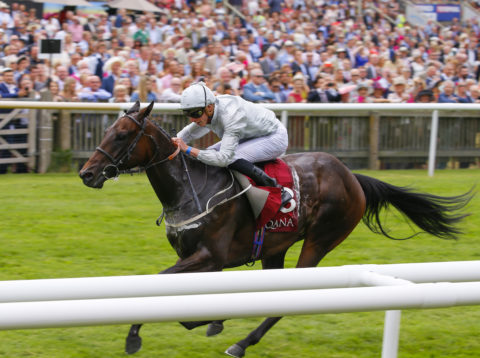
Cardsharp became the first British-trained juvenile to reach 110 when scoring decisively in the Arqana July Stakes.
Mark Johnston’s son of Lonhro was having his sixth start in little over ten weeks and is clearly thriving on a busy campaign just as the Middle Park-winner The Last Lion did for the same stable last year. Interestingly, the runner-up U S Navy Flag was also having his sixth start.
Following Cardsharp’s third in the Norfolk, the step back up to 6f really suited him and a speed figure of 108 goes a good way to substantiating the performance.
The Coventry winner Rajasinghe had to settle for third under his 3lb penalty. He shaped as though a step up to 7f might be required; but the early signs from his Ascot race are not positive. Four of the first five have failed to do much for the form in subsequent starts.
The headline act amongst the juveniles was Gustav Klimt who was promoted to favourite for the 2000 Guineas following his narrow success in the Bet365 Superlative Stakes. His figure of 108 does not come close to justifying that reaction.
He is clearly a smart prospect having overcome trouble in running and he might step up significantly in the future.
A speed figure of 95 shows the gallop was not end-to-end and I felt Gustav Klimt was caught flat-footed when the tempo increased. That played a part in the trouble he met. The interference and need to switch probably cost him the best part of two lengths. I gave him an extra 3lb adjustment for that. It might prove conservative and I am confident that he will improve further, particularly when faced with a true test. We should learn a lot more about him next time.
Roly Poly back to her best
Whilst stablemate Winter has been setting the standard amongst the 3yo fillies over a mile this year, writes Dominic Gardiner-Hill, Roly Poly grabbed some Group 1 glory of her own on Friday with an all the way success in the Tattersalls Falmouth Stakes.
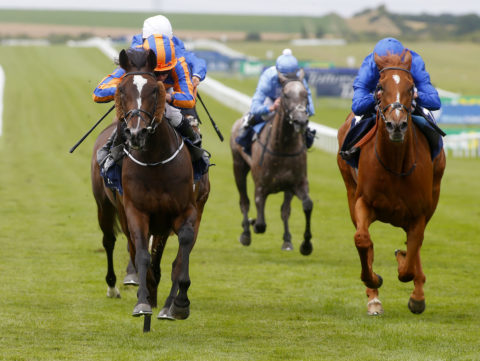
Relatively exposed after twelve previous starts she went into the contest with a pre-race mark of 112. Her very highest rating was a 115 as a 2yo. I find it difficult to believe that winning a Falmouth is inferior form to finishing 2nd in the Lowther and Cheveley Park last season so have credited her with returning to the 115 level this time. She has made gradual improvement in every start since her reappearance in the Nell Gwyn and that pattern looks to have been continued.
At 115 she matches the performances of the last two winners of the race Alice Springs (2016) and Amazing Maria (2015).
The chosen level for the contest has Wuheida (2nd: pre-race 114) running a very commendable 112 on her first start since early October. The improving Arabian Hope (3rd) goes up 3b to 111. Sea of Grace (4th) was a pound below the level she showed on soft ground in the French 1000 Guineas and German challenger Delectation (5th) was also a pound below her current mark of 106.
Unprecedented treble in the offing?
The 3yos may have made the headlines in the July Cup but it was the veterans who shone brightest in the big races over five furlongs on Saturday writes Andrew Mealor.
The 10yo Take Cover gained an eleventh career success in York’s listed City Walls Stakes, a race he had also landed as a 7yo back in 2014.
Historical standards for this well-established event point to a figure in the 110 region for the winner and it is likely that he did not need to improve on his pre-race rating of 111 in beating Final Venture by half a length with Cotai Glory a further neck back in third. Another trip to Goodwood for the King George Stakes will presumably be next for Take Cover when he will bid to land an unprecedented treble having already won that race in 2014 and 2016.
King’s Stand third Marsha was in action in Ireland over the weekend when she was narrowly turned over at short odds in the Group 2 Sapphire Stakes. This was by the other British runner in the field, Caspian Prince, who gained a first success in Group company at the age of eight.
Going into the race with a rating of 116 (and in receipt of the 3 lb fillies’ allowance), it’s unlikely that Marsha was quite at her best despite beaten just a short head (pair clear). It still looks a career best from Caspian Prince despite his advancing years. He was rated 110 following his success in the ‘Dash’ at Epsom last month off a mark of 107 and has now moved up to 115. The form of Marsha’s win in the Palace House Stakes has been downgraded slightly, and she is now also rated 115.
Finally, it’s worth giving a mention to Danzeno who produced a smart effort off top weight when landing a competitive handicap at Ascot on Saturday, beating Polybius by three-quarters of a length. He has gone back to his 2016 peak mark of 109 (up 5 lb) as a result. A run in the Stewards’ Cup under a 6-lb penalty could be next, though potentially more interesting for the Goodwood showpiece could be Polybius who didn’t get the rub of the green at Ascot having met traffic problems in rear. He has gone up 4 lb to a mark of 106 but can race off his old mark of 102 in the Stewards’ Cup.
